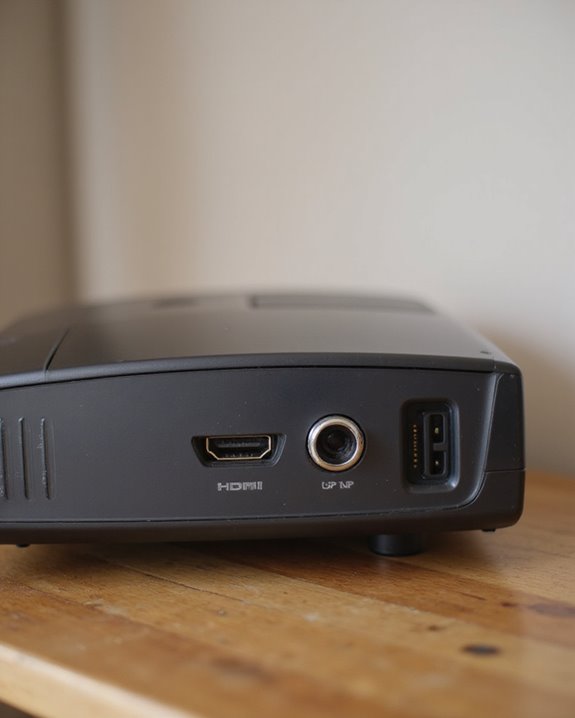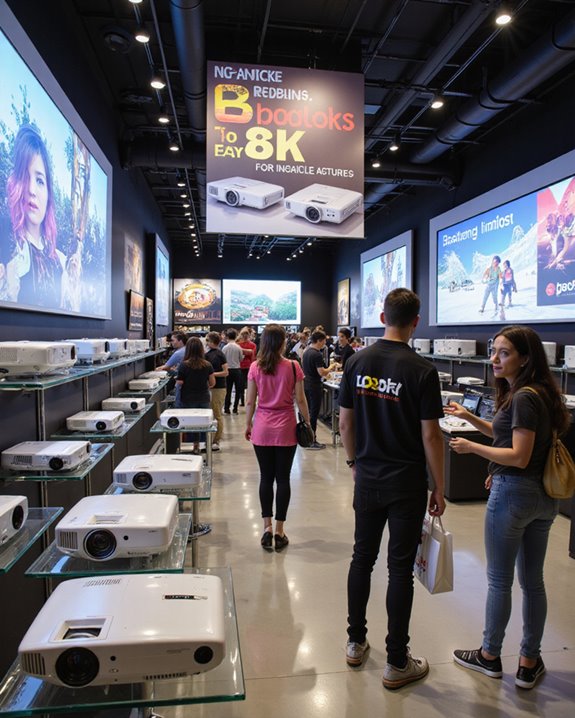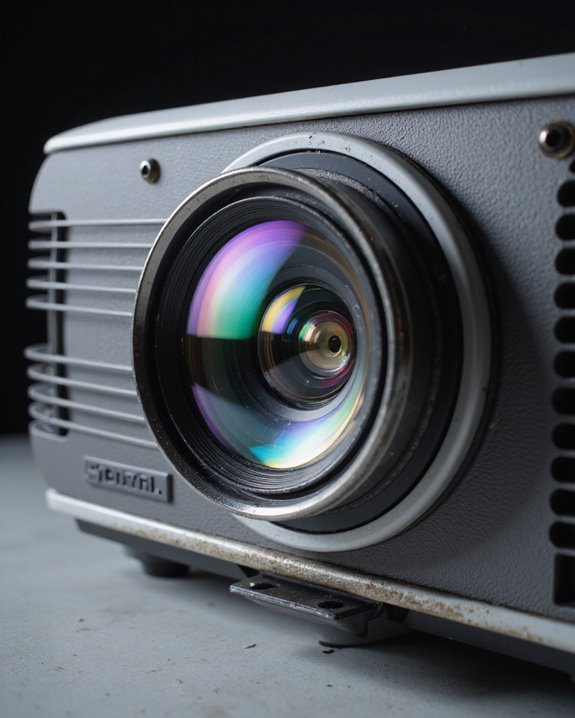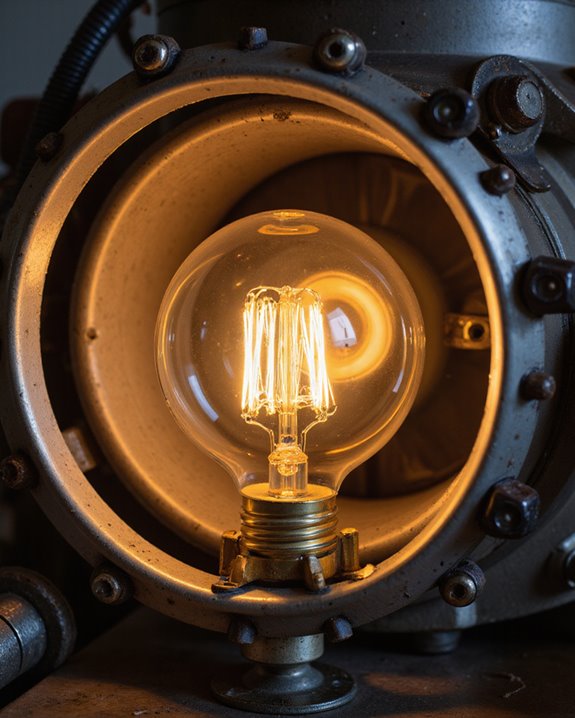Most modern projectors have at least one HDMI port, which stands for High-Definition Multimedia Interface. This port lets users connect devices like laptops or game consoles with a single cable that carries both video and audio. HDMI ports typically use a 19-pin connector, are about 13.9mm wide, and come in durable metal casings. Newer projectors may support 4K or even 8K content, depending on the HDMI version. Additional details highlight notable differences across various models.
Key Takeaways
- Most modern projectors include at least one HDMI port for connecting laptops, streaming devices, or gaming consoles.
- HDMI ports on projectors support high-definition video and digital audio through a single cable.
- Many projectors offer multiple HDMI inputs to easily switch between different sources.
- HDMI compatibility and supported resolution depend on the projector’s HDMI version (e.g., 1.4, 2.0, or 2.1).
- HDMI remains the standard connection for projectors, ensuring broad compatibility with current and future devices.
Prevalence of HDMI Ports on Modern Projectors
How common are HDMI ports on today’s projectors? Nearly all modern projectors, whether for home, business, or educational use, feature at least one HDMI (High-Definition Multimedia Interface) port. This port allows users to connect devices like laptops, gaming systems, or streaming media players with a single cable transferring both audio and video. The widespread inclusion of HDMI ports results from the universal adoption of HDMI as the main digital interface in consumer electronics. Multiple HDMI inputs, often two or three, are now standard in home theater and business projectors. This reduces cable switching and setup complexity. Projectors using alternative power sources, such as batteries or solar panels, still commonly integrate HDMI for compatibility. However, additional hardware and energy demands may increase environmental impacts, especially when considering power management features.
HDMI Specifications and Capabilities in Projectors
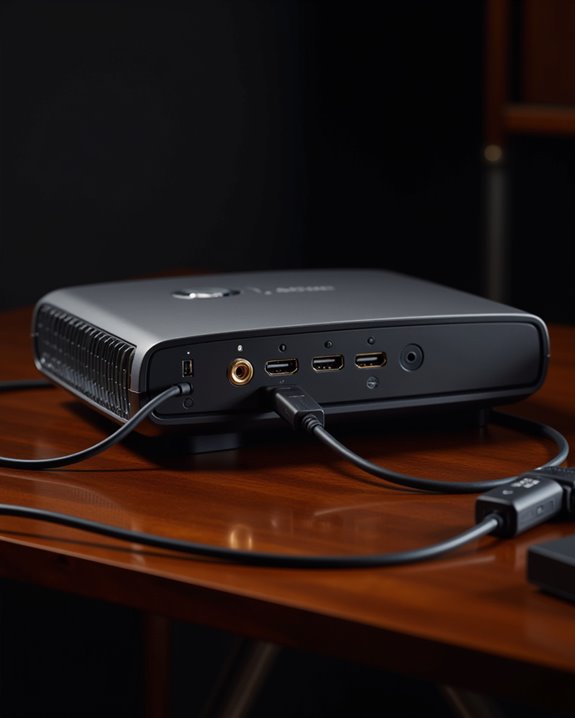
When evaluating projector connectivity, HDMI (High-Definition Multimedia Interface) specifications play a crucial role in determining video and audio quality. HDMI versions impact resolution, refresh rate, and color accuracy. For example:
- HDMI 1.4a supports HD and 3D content, suitable for most consumer sources.
- HDMI 2.0 increases bandwidth to allow 4K video at 60 Hz.
- HDMI 2.1 further boosts bandwidth, enabling 8K resolution, 4K at 120 Hz, and advanced HDR formats like Dolby Vision.
Projectors with HDMI ports can transmit both uncompressed video and digital audio through one cable. Audio Return Channel (ARC) and enhanced ARC (eARC) support high-quality sound to external systems. Many advanced projectors also include features for wireless streaming and Bluetooth integration, offering more flexible connectivity alongside traditional HDMI capabilities. Additionally, high-bandwidth HDMI support ensures future-proof compatibility with the latest devices and content formats.
Physical Characteristics of HDMI Connections
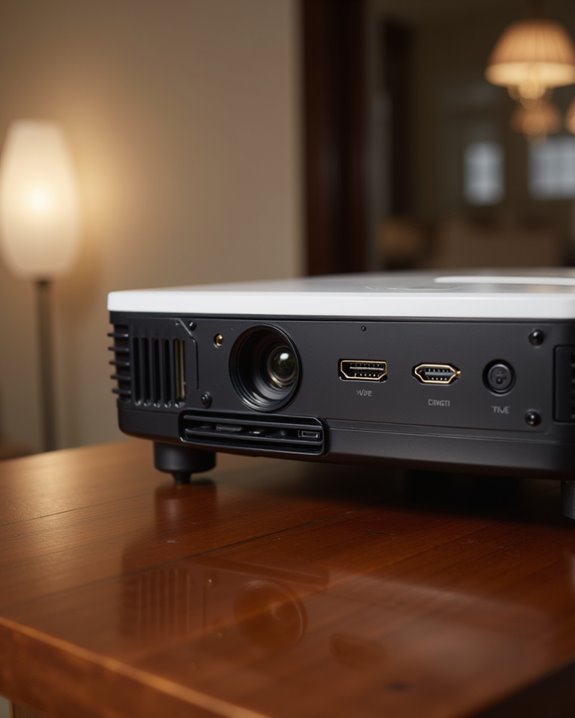
A projector’s HDMI connection relies on specific physical characteristics that guarantee secure, high-quality signal transmission. HDMI connectors come in several types, but the standard Type A is most common on projectors, measuring about 13.9mm by 4.45mm. Connector compatibility is assured by matching the connector type to the projector’s port. Physical features include:
- 19-pin configuration for Type A, supporting audio and video signals.
- Keyed design prevents incorrect insertion.
- Metal shells and gold-plated pins provide electromagnetic shielding and resist corrosion.
- Connector hoods, often made from metal or tough plastic, have strain relief to increase cable durability.
- Triple-shielded cables, typically around 7mm thick, protect signal integrity.
- The durability of HDMI connectors ensures long-term reliable connections, especially in fixed projector setups.
These features enable repeated connections and stable performance, especially for permanent installations like ceiling-mounted projectors.
Compatibility and Supported Signals via HDMI
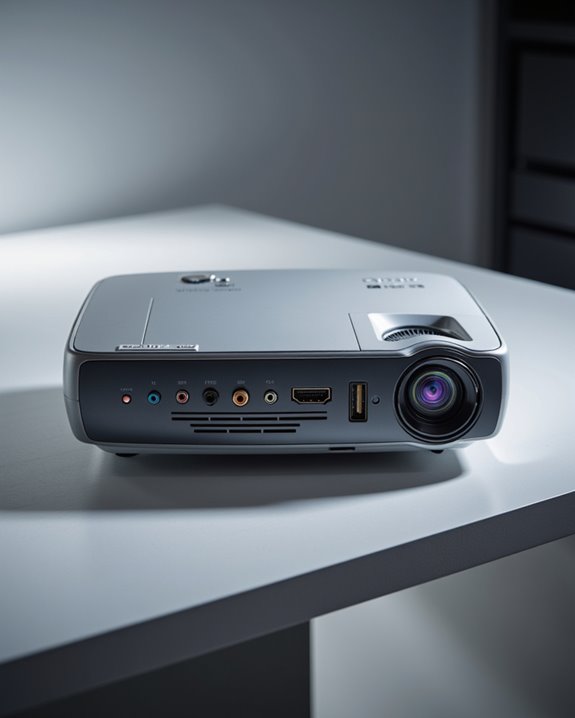
While HDMI has become the standard for connecting projectors to digital devices, compatibility depends on the HDMI version and supported signals. Projectors typically use standard Type A HDMI ports, but some models may offer mini or micro HDMI. Supported HDMI versions—such as 1.4, 2.0, and 2.1—determine the maximum video resolution and refresh rate. For example:
- HDMI 1.4 supports up to 4K resolution at 30 Hz.
- HDMI 2.0 allows 4K at 60 Hz.
- HDMI 2.1 increases data rates for 8K content.
HDMI also transmits audio, supporting formats like Dolby Atmos. Wireless streaming and smart integration features are common in newer projectors, allowing users to connect without cables or access streaming apps directly, but signal support still depends on HDMI standards.
Advantages of HDMI Connectivity for Projectors
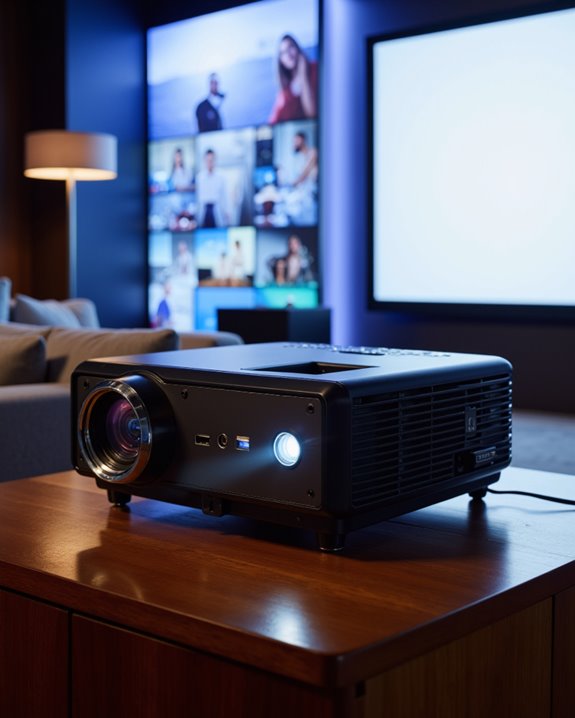
Because HDMI (High-Definition Multimedia Interface) transmits both high-quality video and audio through a single digital cable, it has become the preferred connection standard for modern projectors. HDMI simplifies setup by reducing cable clutter and supporting high-definition resolutions, which is essential for home theaters, gaming, and business presentations. Multiple HDMI ports provide convenience—users can connect a laptop, game console, or sound system at the same time without repeatedly switching cables.
Key advantages include:
- Reliable digital signal transmission, avoiding analog distortion.
- Compatibility with HDMI adapters for connecting older or non-HDMI devices.
- Support for wireless streaming through HDMI dongles, increasing flexibility.
- Enhanced audio features, such as lossless formats and audio-video sync.
- Future-proofing for advanced formats like 4K@120Hz, making HDMI suitable for evolving technology needs.
Frequently Asked Questions
Can I Connect My Smartphone to a Projector Using HDMI?
Connecting a smartphone to a projector via HDMI depends on smartphone compatibility and the use of appropriate HDMI adapters, such as MHL or USB-C to HDMI. Not all smartphones support HDMI output, so adapter selection is essential.
Do Projectors Support Wireless HDMI Adapters?
Wireless connectivity for projectors is possible using wireless HDMI adapters, provided there is HDMI compatibility. These adapters enable cable-free transmission, though users should consider potential latency, interference, and compatibility issues that may affect performance and signal quality.
How Do I Troubleshoot HDMI Connection Issues With My Projector?
When troubleshooting HDMI connection issues, one might discover image loss due to poor cable compatibility or awkward port placement. Ensuring the HDMI cable matches specifications and verifying unobstructed access to projector ports often resolves connectivity problems efficiently.
Are HDMI Cables Included When Purchasing a Projector?
When considering projector accessories, buyers should note that HDMI cables are typically not included with projector purchases. For ideal HDMI compatibility, users must select and purchase appropriate HDMI cables separately, taking into account cable length and quality.
Can Projectors Display 3D Content Through HDMI Ports?
Nearly 60% of home theater projectors now feature 3D projection capabilities. With HDMI compatibility, many models support 3D content via HDMI 1.4, though users must make certain their devices and glasses match the required specifications for peak performance.

